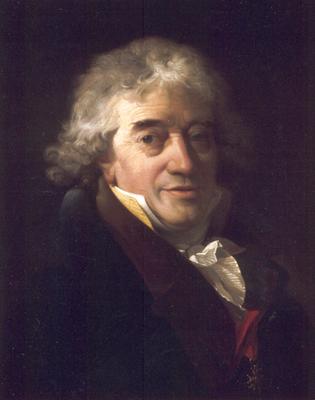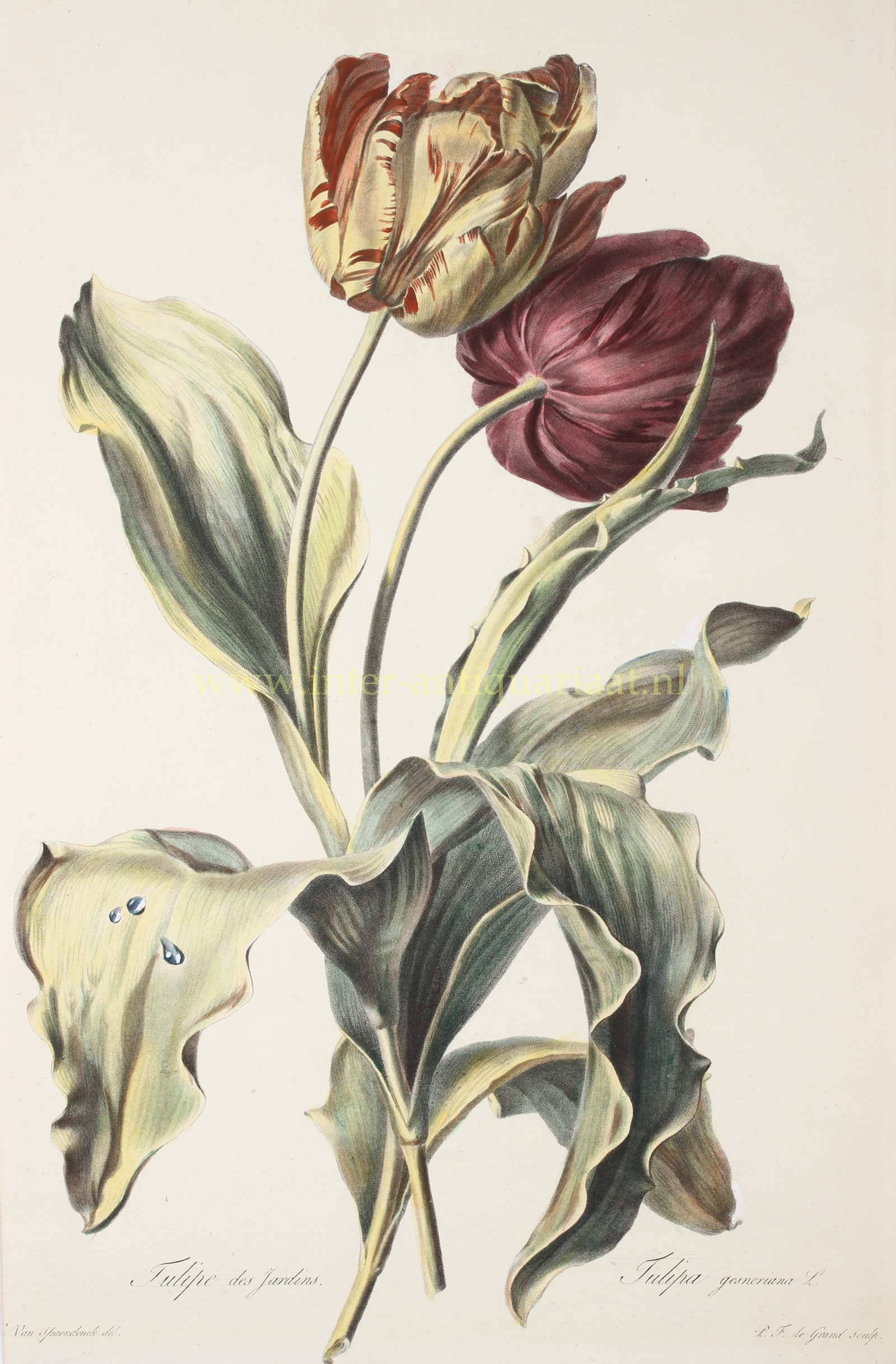TULIPS BY GERARD VAN SPAENDONCK
“Tulipe des jardins“, stipple engraving made by P.F. le Grand after a drawing by Gerard van Spaendonck from the Fleurs dessinées d’après nature, published between 1799 and 1801. With original hand colouring. Size: 50 x 33 cm.
In 1842, Johannes Immerzeel wrote about the artist, “The famous flower painter Gerard van Spaendonck was born into a respectable middle-class family in Tilburg. From an early age, a passion for art stirred within him, and drawing pens and brushes were his favorite toys.
He was disappointed not to find colours to his taste in Tilburg [his place of birth]. Upon hearing from a driver that very fine paints could be obtained in Antwerp, he gave the driver a ducat to buy these colours for him in  Antwerp.
Antwerp.
Seeing his parents recognized his ardent inclination and particular talent for art, they placed him with a furniture painter in Antwerp for six years, paying an annual tuition of 300 florins. His rapidly maturing talent brought considerable advantage to his master in carrying out the tasks assigned to him. It’s no wonder, then, that when the six years of training ended, he was offered 300 florins per year if he wished to stay with his master. This offer was declined. Around this time, major preparations were being made at the camp near Breda for a festival in honor of Prince William V. Van Spaendonck went there and contributed to the decorations. With the money he earned, he financed his journey to Paris, which he undertook with a fellow furniture painter from Berchem, with whom he was friends. The demonstrations of his already fully developed talent soon brought him fame. A nobleman named La Valette, himself an art enthusiast, took him in as a friend. For eight years, he enjoyed this rare generosity, spending summers at a splendid estate and winters at the Louvre, where soil was brought to the building’s roof for growing flowers, all for his benefit.
After the death of this nobleman, to whom Van Spaendonck felt greatly indebted, he always spoke fondly of his benevolent friend and carefully preserved various items dear to him, including the man’s life-sized portrait and the easel he had used.
Van Spaendonck painted numerous plants and flowers for the botanical garden. By 1801, the collection there consisted of thousands of sheets of the finest parchment. For each of these sheets, he was paid 100 francs. Van Spaendonck received this price even for the smallest branch of a plant or flower. He lived for many years with the highly regarded family of the chief gardener. It is said that Van Spaendonck suffered significant losses during the French Revolution [the revolution of 1796]. Later, he found some consolation in his appointment as Professor of Iconography at the Botanical Garden, with an annual salary of 6,000 francs and other benefits, including free residence in a grand home, the same one previously occupied by Buffon. Later, he became a member of the National Institute and the Legion of Honour. As a professor, he taught for three months in summer in the library hall of the botanical garden, where the most beautiful models were drawn with black chalk or watercolours. His students were mostly young ladies of high rank. In many galleries and cabinets across Europe, one can find his exquisite drawings of flowers and fruit in crayon.”
Between 1799 and 1801, Van Spaendonck self-published twenty-four engravings based on his gouaches. His “Fleurs dessinées d’après nature” [Flowers Drawn from Life] is one of the most famous flower books, celebrated for its beautiful depictions, printed using stipple engraving. The ability to differentiate between various shades of gray made it exceptionally suited for depicting botanical details, a method that Van Spaendonck also taught to his pupil, Pierre-Joseph Redouté.
Like other famous flower painters, Van Spaendonck was technically flawless, whether working in oil paint, watercolor, pen, or pencil, and on any scale. With meticulous attention to detail, elegance, and refinement in composition, he demonstrated his mastery. Like Jan van Huysum, Van Spaendonck understood the spirit of the times and created floral works that perfectly matched the tastes of the public around 1800. He combined the traditional Dutch way of depicting flowers with French sophistication and taste.
Price: Euro 1.450,-
RESERVED


